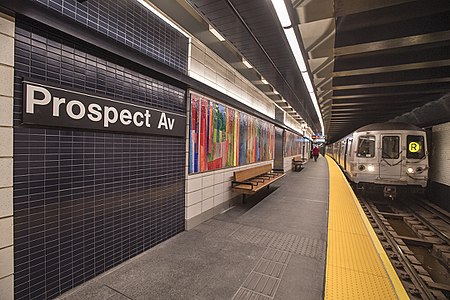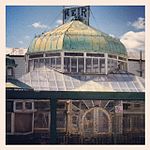Prospect Avenue station (BMT Fourth Avenue Line)

The Prospect Avenue station is a local New York City Subway station on the BMT Fourth Avenue Line in Brooklyn. It is located at Prospect Avenue and Fourth Avenue near the convergence of the Gowanus, Greenwood Heights, Park Slope, and South Park Slope neighborhoods. It is served by the R train at all times. The D and N trains also stop here during late nights, and some rush-hour W trains stop here in the peak direction. The Prospect Avenue station was constructed as part of the Fourth Avenue Line, which was approved in 1905. Construction on the segment of the line that includes Prospect Avenue started on December 20, 1909, and was completed in May 1912. The station opened on June 22, 1915, as part of the initial portion of the BMT Fourth Avenue Line to 59th Street. The station's platforms were lengthened in 1926–1927, and again during a renovation in 1968–1970. The station was also renovated in 1970 and 2017.
Excerpt from the Wikipedia article Prospect Avenue station (BMT Fourth Avenue Line) (License: CC BY-SA 3.0, Authors, Images).Prospect Avenue station (BMT Fourth Avenue Line)
4th Avenue, New York Kings County
Geographical coordinates (GPS) Address Nearby Places Show on map
Geographical coordinates (GPS)
| Latitude | Longitude |
|---|---|
| N 40.665277777778 ° | E -73.993055555556 ° |
Address
4th Avenue 600
11215 New York, Kings County
New York, United States
Open on Google Maps




